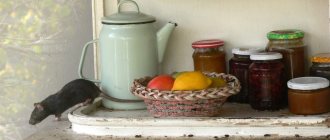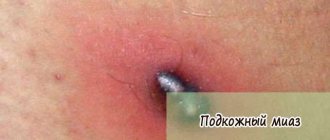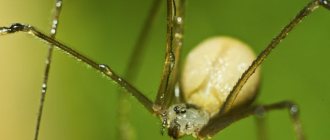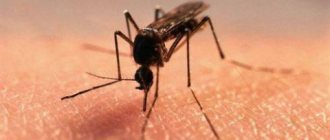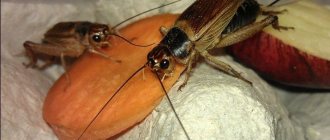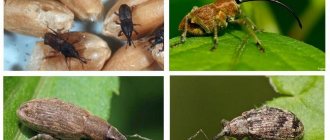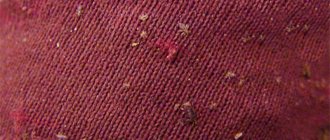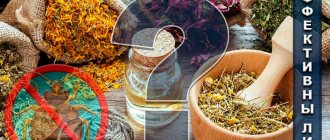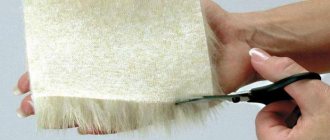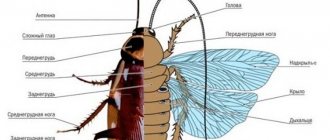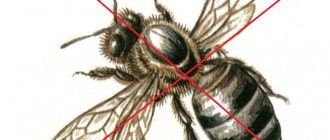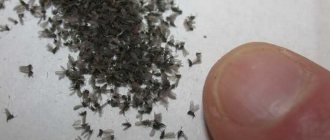Insect pests cause a significant impact on agriculture and forestry. Horntail is one of these representatives. There are 120 species of this insect. Females are usually large. The ovipositor is long and is needed for piercing leaves and further laying eggs there.
Horntails are dangerous pests
The body is cylindrical in shape. The head is rounded. The insect is a pest of coniferous trees. In appearance, the representative resembles a wasp. This is due to the peculiar body color. All subspecies of the insect are active and often settle inside the tree.
Description
The large horntail is a medium-sized insect with a cylindrical body 12-40 mm long. Females are noticeably larger than males. The chest and head of females are black, the abdomen is yellowish with purple-black middle segments. The wings are transparent, brownish with darkening. The ovipositor is long and serrated, resembling a sting. The body color of the male is black, the abdomen is reddish, with black first and last segments. The last segment is finished in a blunt funnel shape. The antennae are long and thread-like. The head is black with 2 yellow spots behind the eyes.
What the affected areas of wood look like
The insect eats branched passages in the wood. The parasite clogs all the tunnels with the products of its vital activity. Additionally, fungal spores germinate there. It is quite difficult to recognize an infected tree externally. Damage can only be determined by cutting the wood.
It is not noticeable which trees contain a clutch of eggs. After laying new offspring, there are no external signs on the bark. This makes pest control difficult. It is quite difficult to remove the parasite from the site.
You will find out why the large coniferous horntail is dangerous. after watching this video:
The tree dies not only because the horntail appears. A damaged plant weakens and becomes susceptible to other diseases and pests.
Nutrition and lifestyle
These insects got their name because both larvae and adults have a spine at the rear end of the body. The first adults of the greater horntail appear in May. Insects are most active in June - July. Life expectancy is about 2 weeks, during which adults do not feed. Mostly these pests settle on diseased or cut down trees. Despite the fact that the jaws of adults are powerful, their bites are painless and safe.
The main damage is caused by horntail larvae. Moreover, the females, along with the eggs that she lays in the bark of spruce, fir and larch, bring into the tree spores of a fungus that destroys the wood to make it suitable for eating by larvae. Despite its harmfulness, the species is listed in the Red Book of individual regions and regions as being under current threat of extinction.
What are the types?
In total there are more than 100 species of horntail. The table describes the main ones.
Read on topic:
Features of the life activity of ladybugs
14.11.2020
Description of chironomids and their possible danger to humans
14.11.2020
What do cutworms look like and what harm do they cause?
14.11.2020
What do goliath beetles look like and can they be bred at home?
14.11.2020
| Greater coniferous horntail | The insect affects all coniferous species. Most often, the insect affects pine and spruce trees. Occasionally, the representative attacks deciduous trees. All contaminated wood will no longer be suitable for construction. The tree itself will soon die and will be able to grow and develop. Adult beetles live only 7 days. The color of the insect is black, and the wings are yellow-brown. One female produces 100-300 eggs. New offspring hatch within a month. |
| Blue pine horntail | The insect attacks young trees, as well as old and weakened ones. All affected flora representatives dry out the next year. The beetle selects only thin-barked plants. The beetle usually attacks trees infected with other parasites. As a result, the plant is completely destroyed and is not suitable for any purpose. The insect flies from June to August. Each female is capable of reproducing up to 500 eggs. The larvae infect wood and make winding passages there. Mushrooms grow on damaged areas. |
All species are classified as pests. You should start fighting insects as early as possible. Otherwise, all trees will be destroyed.
These insects cause great damage to trees in forests
Life cycle
Mating occurs 2-3 days after the imago emerges. After this, the fertilized female begins to lay eggs, drilling a thin channel up to 40 mm deep in the bark and wood, where she usually lays 2-3 eggs. During her short life, a female can lay up to 300 of them. After 3 weeks, the larvae hatch and immediately gnaw inside the tree.
They spend the first winter in the upper, softer layers of wood, which they feed on. In the second year of life, the larva gnaws a passage up and into the trunk. By the beginning of the second wintering, the larva, having reached the last instar of development, moves outward and, approximately 10 mm from the surface of the trunk, gnaws out an oval cradle, where it pupates and overwinters. In the spring, a young insect gnaws a flight hole in a tree to fly out. On average, the development of the larva lasts 2-3 years, but can stretch up to 5-6 years (under unfavorable conditions).
What are the features of lifestyle and reproduction
Insects colonize trees in May. The peak of activity is observed in the summer. First of all, beetles affect diseased plants. A clutch of eggs can usually be found under the bark. After hatching, the larvae will almost immediately make passages and destroy trees. The likelihood of other pests increases.
Affected wood suffers not only from the pest, but also from the fungus that appears in the affected areas. Egg maturation lasts a month.
The larvae first eat the young parts of the trunk, and gradually move closer to the center. Pupation also occurs there. The insect is voracious and eats much more than its weight.
Appearance of horntails
These beetles have a long, cylindrical body. The back of the body is pointed. Females have a clearly visible, long ovipositor.
Horntail larva.
The larvae are cylindrical in shape, slightly curved in the shape of the letter S. The color is whitish. The larvae have 3 pairs of vestigial thoracic legs. On the back of the abdomen there is a stepwise process.
Economic importance
Horntails are secondary and technical pests of coniferous wood: spruce, pine and fir. They can also be pests of technical structures or furniture. It is very difficult to recognize damage even when sawing. Damage to large timber can be detected only after flight holes appear on the surface. Horntails do not sting and have no poison.
Tremex columba
Horntails have been known since the early Jurassic period. The family includes about 120 species in 20 genera.
Taxonomy of the family True horntails (Siricidae):
- Subfamily: Siricinae = Genus: Sirex =
- Genus: Sirotremex =
- Genus: Urocerus =
- Genus: Xoanon =
- Genus: Afrotremex =
The benefits of equestrians in agriculture
In different species of ichneumon ichneumon, the number of eggs can range from 15 to 15 thousand. Moreover, it is not at all necessary that the offspring of wasps that lay a small number of eggs will be small, since several thousand larvae can hatch from one egg.
All species of wasps are parasites. At the same time, they lay their eggs in the bodies of the victims so that the victim remains alive and the larva feeds on it during its development. At first, the larva eats only fat and does not touch vital organs, and then proceeds to the rest.
The riders are slowly but surely destroying their “living incubator”
Numerous crop pests mainly become victims of riders. In this regard, people have long bred equestrians to protect vegetable gardens and fields. Most often, the egg-eating parasites Trichogramma are used for these purposes, which infect the eggs of cabbage moths, codling moths and cotton bollworms.
Lifestyle and habitat of long-tailed wasps
The predominant habitat of most of the 100 thousand species of ichneumon wasps present today is the tropics. In temperate latitudes (in Russia) only a few varieties can be found. What they all have in common is the laying of eggs or larvae on or directly into the body of caterpillars and other insects. Not everyone is capable of stinging.
Wasp wasps do not look too threatening, especially those found in Russia. Their size ranges from 3 mm to 3 cm in length, and the chance of meeting the largest representatives is extremely low due to their extreme rarity. All types have different colors: from translucent to rich black.
Wasp rider
For your information! The insect has 6 legs, an elongated abdomen ending in a sharp ovipositor, a thin waist, transparent or colored wings, most similar to the wings of a dragonfly. There are species of wasps without wings at all, very similar to ants. A wasp with a long tail looks interesting.
Riders do not have a sting. Instead, there is a long ovipositor. However, the insect is quite capable of causing harm, since a special poisonous secretion is released from the ovipositor. Having pierced the skin of the enemy with its sharp end, the wasp injects poison, which has a paralyzing effect, although it does not pose a danger to the life of the insect. All riders are parasites, which are divided into 3 groups:
- ectoparasites that attach eggs and larvae to the body surface of other arthropods;
- endoparasites that introduce eggs into the body of other insects, using paralyzing poison;
- superparasites that are capable of infecting their own kind.
Fighting methods
Since the horntail grows not only in forest plantations, it can be dangerous for coniferous timber warehouses and residential buildings built from it. Infestation of the trees themselves is no less dangerous: the large horntail is capable of destroying a large area of forest, including rare conifers, and at the first sign of its appearance, measures must be taken.
The favorite delicacy of the large coniferous horntail is felled forest, so wooden houses must be treated with special compounds against insects and fungus.
Such compositions are applied with a brush or roller, and can be purchased at any hardware store. A simple spraying with Actellik can help save your garden from horntail. It should be diluted in the following proportion: 20 grams per 10 liters of water. This is the same substance
will help get rid of other wood-eating pests.
In addition to chemicals, other insects can also get rid of the horntail population. For example, ground beetles, pests, predatory bugs or rove beetles can greatly reduce the number of parasites. You can also use the introduction of insects from the ichneumonid family, and they will parasitize the egg clutches and destroy the horntail larvae before they are born.
Finally, in nature, the large coniferous horntail becomes prey for all kinds of woodpeckers, and favorable conditions should be created for these birds to destroy the horntail in a designated forest area. This method is best for protecting trees in their natural environment.
What traces does it leave?
The horntail clogs its passages with waste from its activities. Most often it is drilling meal , and is quite easy to see and identify visually. The larva develops for about three years. An adult insect makes wide round moves and climbs out from the cradle in the center of the trunk. Along with the horntail larvae, other harmful insects also penetrate into the tree, which worsen the condition of the trunk and lead to its death.
The destruction of cockroaches is sometimes unsuccessful if you do it yourself - in this case, you should call a pest control service. Pests of cultivated plants carry diseases such as rot, viruses and bacterial diseases. How to deal with insects that harm indoor plants, read in this article.
On corn you can often find a white butterfly - this is a meadow moth. You can find a full description of this pest at the link.
A distinctive feature of riders from other insects
A distinctive feature of ichneumon is the presence of an ovipositor. This ovipositor is sharp, which is why in English-language literature ichneumon wasps are called parasitic wasps. With the help of a sharp ovipositor, riders lay eggs in the bodies of victims. The victims, as a rule, are larger insects: arthropods, butterfly caterpillars, beetle larvae and spiders.
The rider climbs onto the victim, as if he wants to ride it, hence the name, and inserts the eggs directly into the body of the living insect. The larvae develop inside the victim, gradually eat internal organs, develop and destroy their “incubator”.
Equestrian (Parasitica).
